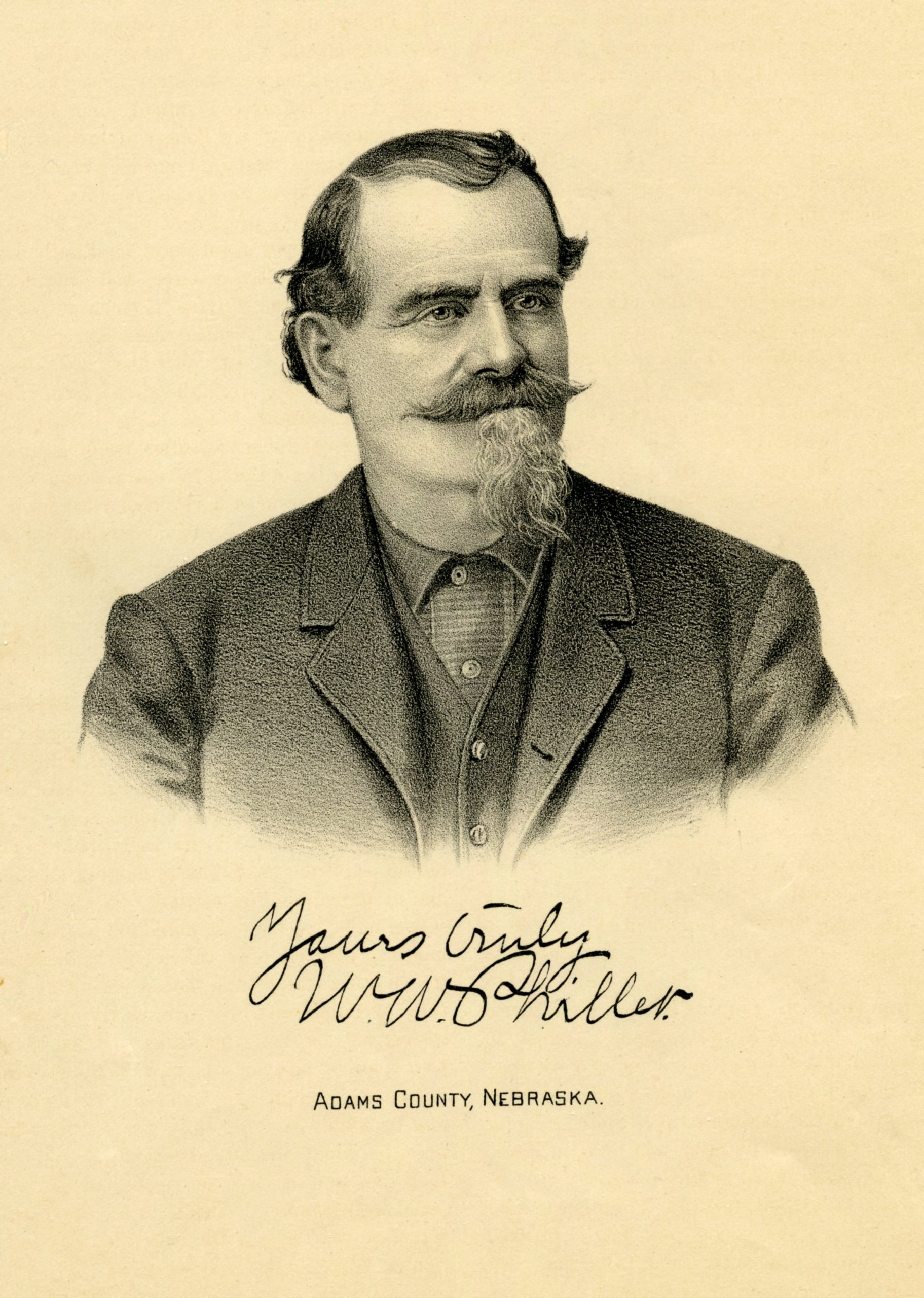
B: June 8, 1840 in Port Byron, Illinois
D: September 17, 1914 in Ayr, Nebraska
Lilliam Wallace Philleo was born June 8, 1840, in Port Byron, Illinois to Addison and Livonia Philleo. William also went by “Scott,” a nickname given to him by his mother who was of Scottish descent. At the age of thirteen, William was thrown from a horse and nearly broke his back. He was unable to continue school due to the fact that he could not sit for long periods of time. After his back healed, William’s father and uncle arranged an apprenticeship with the first daily newspaper in Rock Island, Illinois.
During his two years at the newspaper, William worked in the office and learned to set type. He worked at the newspaper office during the colder months. However, during the spring and summer months, he would run away to hunt and trap. In 1857, William left the newspaper and began traveling the countryside as a solicitor, selling books to local communities. He saved a good deal of money but lost it all in the financial panic of 1857.
In 1858, William returned to Port Byron but promptly left again with a group of four others heading to Fort Leavenworth, Kansas, with the idea to join the war in Utah. Upon arriving, William was hired by the government as a driver with the last cavalry detachment headed to Utah. He soon left this position as he did not care for the rough group of men he was traveling with.
William next worked for Russel, Majors, and Waddell, a prominent freight, mail, and passenger transport company. Here, he broke Texas steers and readied wagon trains for the trip west. Until 1860, William worked a variety of jobs including selling ox yokes, hauling and rafting logs in Kansas, driving wagons for a freight company, and milling in Missouri. He returned to Port Byron in July 1860 to work on his father’s farm.
With the outbreak of the Civil War, William was one of the first volunteers from Rock Island, Illinois. He mustered into service as a private with Co. D, 12th Illinois Infantry, on April 14, 1861. He served for three months and re-enlisted as a corporal with Co. A. 37th Illinois Volunteer Infantry Regiment, mustering in at Chicago. For the next three years, William and his unit fought primarily in Missouri and Arkansas, where he participated in the campaign for Springfield, Missouri, and the battles of Pear Ridge and Prairie Grove, Arkansas. He was then sent to participate in the Battle of Vicksburg. William was promoted to second lieutenant and transferred to Co. K, 22nd Regiment Corps d’Afrique, which was later designated the 92nd United States Colored Infantry. In 1864, he was up for an advancement with the regular army, but was declined because he was physically disqualified for the position. William remained with the 92nd until he was mustered out of service in May 1865.
After the war, William returned to Port Byron. He married Maggie Farris on May 12, 1870. The couple had four children: Livonia, Frank, Wallace, and Ira. The couple traveled west and William entered an agricultural implement business with A.C. Moore in Crete, Nebraska.
With the outbreak of the Civil War, William was one of the first volunteers from Rock Island, Illinois. He mustered into service as a private with Co. D, 12th Illinois Infantry, on April 14, 1861. He served for three months and re-enlisted as a corporal with Co. A. 37th Illinois Volunteer Infantry Regiment, mustering in at Chicago. For the next three years, William and his unit fought primarily in Missouri and Arkansas, where he participated in the campaign for Springfield, Missouri, and the battles of Pear Ridge and Prairie Grove, Arkansas. He was then sent to participate in the Battle of Vicksburg. William was promoted to second lietutenant and transferred to Co. K, 22nd Regiment Corps d’Afrique, which was later designated the 92nd United States Colored Infantry. In 1864, he was up for an advancement with the regular army, but was declined because he was physically disqualified for the position. William remained with the 92nd until he was mustered out of service in May 1865.



